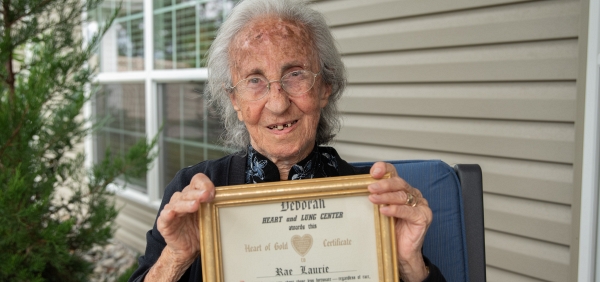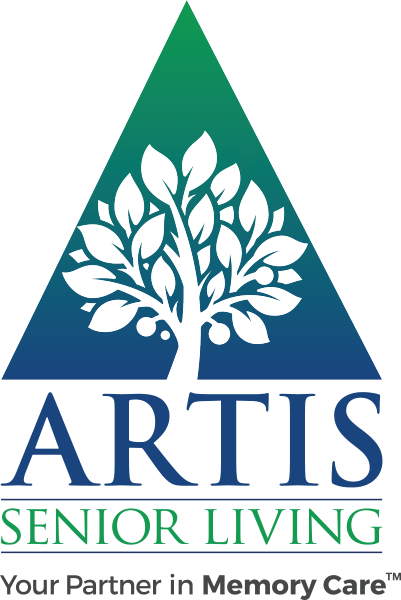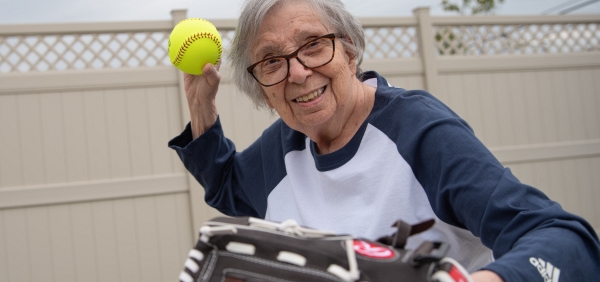Benefits of Technology in Memory Care

What Are the Benefits of Technology in Memory Care Program?
Technological advances are happening all around us, and adding convenience and entertainment to our lives every day. Just as in many other areas, senior living communities are using technology more and more, and the benefits of technology in Memory Care are becoming increasingly clear.
The idea that older adults are resistant to technology is a thing of the past. Seniors now see great improvements to their quality of life, and are more likely to adapt to modern innovations than ever before.
Here are some of the improvements in quality of life that technology can have for people living with cognitive decline.
Eliminate Feelings of Isolation
Video chatting through the internet became widespread during the COVID-19 shutdown. It was especially important to protect seniors who might be considered high-risk for infection. But it was also important to keep senior living community residents from feeling isolated or removed from the people they care about.
For residents of a Memory Care community, video conference visits are a wonderful way to stay connected, hear and see loved ones, and feel the satisfaction of spending time together. It also has the added benefit of keeping residents in a physically and medically safe environment. It can be especially rewarding to be able to interact with loved ones who live far away, and may not have the chance to visit frequently.
Photos of loved ones or of themselves from the past are great ways to entertain and stimulate the minds of seniors living with cognitive decline. They spark memories, positive emotions and conversation.
Sherish provides a digital slideshow of photos shared by family and friends. The technology also can add text or voice messages. It’s a great way to keep residents connected to the people they care about, and can be shared with visitors as a way to initiate conversation and happy times together.
Stimulate Brain Function with Technology
Video games can be a fun source of casual entertainment, and also a way to stimulate brain function. There are games available for many stages of cognitive decline. Active seniors with dementia can play complex games, while those living in more advanced stages can enjoy watching the movement of colored lights and move along as much as they are able.
Virtual Reality activity options available at some Memory Care programs are truly amazing. Residents can play video games that are totally immersive, or they can simply travel virtually to practically anywhere in the world, and experience the sights and sounds of almost any environment. It’s particularly satisfying for someone living with cognitive impairment to be able to experience a place they’ve been before and enjoyed visiting. The memory can be both emotionally satisfying and cognitively stimulating.
Using a virtual reality headset can also help a dementia resident experience a music concert, a car ride through the countryside, or so many other options, all from the comfort and safety of their Memory Care community.
Mindfit is a software program that uses initial sessions to assess user abilities, and develop a customized program to maximize enjoyment and effectiveness. These activities include short-term memory exercises, time estimation, and dividing attention.
Obie interactive system incorporates a projector, sensors, and a choice of games designed specifically for seniors to comfortably challenge their cognitive skills. These games have proven to be both enjoyable and beneficial, and since the activities are projected onto smooth surfaces, they can be easily cleaned and sanitized for safe repeated use. Obie is effective for both cognitive and motor skills for seniors in various stages of cognitive decline. The moving lights and colors often cause users to naturally respond and move. And the results are clear. Seniors who regularly use Obie show a 97% increase in motor skill abilities, an 88% increase in cognitive abilities and an 84% increase in social interaction abilities. That’s truly amazing!
Tracking Health and Location
It’s common to see people of all ages wearing smart watches of some kind that monitor and record steps, heart rate, calories burned, or other health information. This sort of technology can be particularly beneficial for Memory Care residents. Caregivers can keep track of steps, making sure residents get the exercise they need. This technology can also monitor sleep patterns, and set alarms as reminders for mealtimes, activity times, or when to take medications.
There is even wearable technology that is capable of monitoring biometric data. Information such as heart rate can be tracked, and health care providers can be alerted if the device detects some sort of irregularity, like elevated heart rate, for immediate intervention. This not only adds to the health and quality of life of residents, but brings tremendous peace of mind both to the seniors who benefit from this technology and their loved ones.
These wearable devices can also function as geolocators to keep residents from becoming lost, and they can function as a way for a resident to seek assistance if needed.
What Are the Benefits of Technology for People with Dementia?
The use of technology can stimulate a person’s senses. It’s been proven that neural connections are strengthened and cognitive decline can be slowed when a resident in Memory Care is using hand-eye coordination, learning a new activity, or using muscles to practice coordination. Movement-based games and virtual reality sessions are shown to help people with cognitive decline improve the performance of detail-oriented tasks. And games of thought and strategy can help Memory Care residents with decision-making and cognitive clarity.
It can’t be overstressed that these activities are fun! We all like engaging in activities we enjoy, and when a person with cognitive impairment is able to use technology to have a fun social or active experience, it can relieve stress, stave off depression and boredom, and increase a person’s overall quality of life. It encourages residents of a Memory Care community to focus on enjoyable activities they’re capable of doing, rather than being reminded of any activities they may no longer be capable of engaging in. A virtual, or more passive, safe version of an activity can be great fun.
Practical Benefits of Technology in Memory Care
As important as they are, the benefits of technology in Memory Care aren’t just about fun and mental stimulation. Technology can be used to collect information and provide professional caregivers insight on what’s working for individual residents, as well as areas that could be improved. This can lead to better individual care and improved outcomes for all.
Medical records are now commonly recorded using technology. When the medical history of a Memory Care resident can be shared with a doctor or hospital, rehabilitation expert, or other health care provider, everyone can be on the same page. This saves time, leading to faster results, and more consistent and accurate record-keeping.
The Benefits of Artis Senior Living
Artis Senior Living does not offer technology in care at our senior living communities; however, we focus on providing comfort, independence and fun, while striving to slow cognitive decline through continuous engagement and stimulation of brain function.
The Artis Way is an approach to Memory Care that focuses on comfort, safety and dignity in specially designed communities. We understand that each resident is a unique and special individual with equally individual needs and preferences. We take the time to get to know our resident partners, what will help them the most, and what will make them happiest. If someone you love is receiving Memory Care at an Artis community, you’ll have the peace of mind knowing their quality of life is the best it can be.
To find out more about our approach to care, and all the ways your loved one can benefit from Memory Care The Artis Way, contact us.



